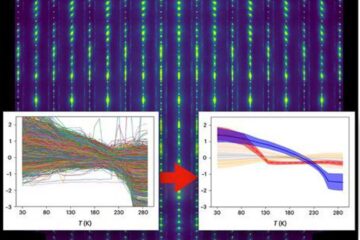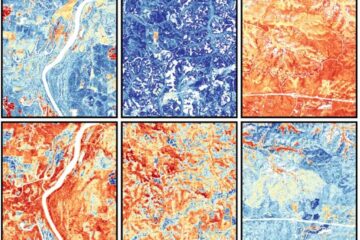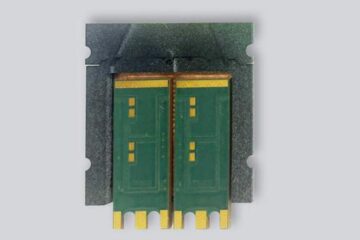Ground temperature aids in measuring water levels

Scientists are studying water tables in the Southwest with an eye towards conservation
Scientists have discovered an unusual way to measure how fast water moves from the ground surface to the water table: they analyze the ground temperature.
Research in Vadose Zone Journal, published by the Soil Science Society of America, describes the methodology behind using temperature to analyze how much water is recharging the ground water at a specific location. The research describes scientific results for field sites in New Mexico and Nevada, where researchers have discovered that borehole measurements of temperature between the surface and the water table aid in measuring how fast water moves to the underlying water table.
“How rapidly this water moves determines the amount of water that can be pumped without using more water than can be replenished by precipitation and streams, which has remarkable impacts for irrigation,” said Jim Constantz, U.S. Geological Survey, California, who collaborated with Scott Tyler, University of Nevada, and Ed Kwicklis, Los Alamos National Laboratory, New Mexico.
They examined deep temperature data under Yucca Mountain and French Flat, Nevada, and shallower temperature data in the Rio Grande Basin of New Mexico. When comparing temperature-based measurements of water movement for mountainous, valley, and intermediate locations, there was an enormous range in rates of water movement toward the underlying water table. Beneath desert streams the downward movement of water was as high as several feet a day, while in deep arid basins the movement of water was no more than a fraction of an inch a year or less.
In the future, routine measurements of ground temperature may lead to widespread identification of the cumulative rates of water movement toward the water table, permitting water to be pumped at a rate that does not exceed the rate of ground water recharge. This could lead to the sustainability of ground-water resources for future generations in the Southwest, according to Constantz.
Vadose Zone Journal, www.vadosezonejournal.org, is an electronic, peer-reviewed, international publication published by the Soil Science Society of America (SSSA), with the Geological Society of America as cooperator. The research and assessment needs of the vadose zone have grown in response to the pressure of increasing human impacts, prompting this new publication for a diverse range of scientists and engineers. The mission of the Vadose Zone Journal is to disseminate information about the physical, chemical and biological processes operating in this zone and to facilitate science-based decision making and sustainable management of the vadose zone.
The American Society of Agronomy (ASA) www.agronomy.org, the Crop Science Society of America (CSSA) www.crops.org and the Soil Science Society of America (SSSA) www.soils.org are educational organizations helping their 10,000+ members advance the disciplines and practices of agronomy, crop and soil sciences by supporting professional growth and science policy initiatives, and by providing quality, research-based publications and a variety of member services.
Media Contact
All latest news from the category: Earth Sciences
Earth Sciences (also referred to as Geosciences), which deals with basic issues surrounding our planet, plays a vital role in the area of energy and raw materials supply.
Earth Sciences comprises subjects such as geology, geography, geological informatics, paleontology, mineralogy, petrography, crystallography, geophysics, geodesy, glaciology, cartography, photogrammetry, meteorology and seismology, early-warning systems, earthquake research and polar research.
Newest articles

Machine learning algorithm reveals long-theorized glass phase in crystal
Scientists have found evidence of an elusive, glassy phase of matter that emerges when a crystal’s perfect internal pattern is disrupted. X-ray technology and machine learning converge to shed light…

Mapping plant functional diversity from space
HKU ecologists revolutionize ecosystem monitoring with novel field-satellite integration. An international team of researchers, led by Professor Jin WU from the School of Biological Sciences at The University of Hong…

Inverters with constant full load capability
…enable an increase in the performance of electric drives. Overheating components significantly limit the performance of drivetrains in electric vehicles. Inverters in particular are subject to a high thermal load,…





















